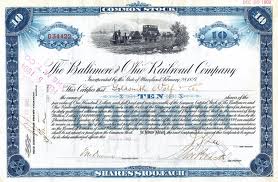Providing employees an opportunity to have ownership in your company can be a great tool to get alignment with the employees. Restricted stock is one other tool to reach the Holy Grail of having employees who think like owners [December 9, 2012]. As I wrote before in this series, each type of “incentive plan” (or maybe we should call them “alignment plans”) has different characteristics that make them better used in certain situations than in others. Stock options was the focus of this post and the situations where they are the best tool.
Another option that business owners may consider is restricted stock. This is stock that is sold (at a discounted price, sometimes deeply discounted) or granted (taxable event) to employees along a vesting schedule that has time and performance vesting (thus the restriction). If the time and performance vesting is not achieved, the company can buy-back the stock at the original price paid by the employee. So, a person who just became CEO of the company with no prior ownership could be sold restricted stock that represents 5% of the company and 2.5% vests over 5 years and 2.5% vests if the company attains certain financial or operational results. Thus, restricted stock has fewer all-or-nothing characteristics than stock options and may be better suited for more established companies where the goal is to increase value steadily, but not aim everyone toward a moon shot exit event at some point.
Below is a review of how restricted stock can influence behavior if it is implemented in a company. Does restricted stock . . . . .
- Incent an exit? Restricted stock does not incent an exit as strongly as stock options, but they do not work against an exit either. While stock options only really become valuable on an exit, restricted stock is different. Restricted stock gives employees access to dividends from earnings which means they are getting value along the way. In my opinion, having the employee participate in both parts of the return to owners, dividends/distributions and capital gains, provides the employee with a more balanced view of the company and provides good alignment with the other owners.
- Incent near-term profitability? Yes. This is totally different than stock options. Because these employees would benefit from near-term profits through dividends or distributions, they care a lot more about aiming toward near-term profitability rather than a big exit. Stock options are not ownership until exercised so even if the company made a profit, the employee would not have a claim on that profit through her stock options (other than through a secondary effect of company reinvesting the profit for greater long-term value).
- Incent long-term employment? In my opinion, yes. Restricted stock is more steady value accretion which incents long-term employment rather than stock options which is basically a gamble where you win big or go home — either way the employee is leaving in only a few years.
- Incent meritocracy? In my opinion, yes. Restricted stock is usually granted to a more select group than stock options because it is real ownership which isn’t given lightly in closely-held companies. So yes, I think it is a way for star performers that have a large impact on the organization to participate in the value creation at the company and rewards merit. Stock options can be very unfair when they are given broadly because the value received by the employee can be very different than the value created by the employee.
If you have a good, solid, profitable and growing company where you want a handful of top executives to be aligned for the long-term (and not focused on a quick exit), restricted stock is a far better tool than stock options.
Related Articles:
- Quest for the Holy Grail of Employees — Employees Who Think Like Owners [December 9, 2012]
- Competitive Advantage, Company Culture, and Simon Sinek [May 15, 2012]
- Company Culture a Superman-Strong Competitive Advantage [June 26, 2012]
- How much of a competitive advantage is employee longevity? [September 3, 2012]



 I am an investor at Greybull Stewardship, an
I am an investor at Greybull Stewardship, an 
 Sign Up
Sign Up RSS Feed
RSS Feed
By Employee Ownership | Company Culture, Strategy | Mason Myers Business Blog for Owners, Investors July 28, 2013 - 8:16 pm
[…] most tools, it is great in certain circumstances and counter productive in other situations. Restricted stock [post on January 17, 2013]. Employee Stock Ownership Plan (ESOP, not the Employee Stock Option Plan variety). Phantom or […]
By Employee Ownership, Business Owners | Phantom Stock, Shadow Stock, Virtual Stock | Mason Myers Blog August 15, 2013 - 12:04 pm
[…] can use to assist employees to think like owners. Previously I have covered stock options and restricted stock. This post is about phantom stock or virtual stock. Later, I also want to cover Employee Stock […]